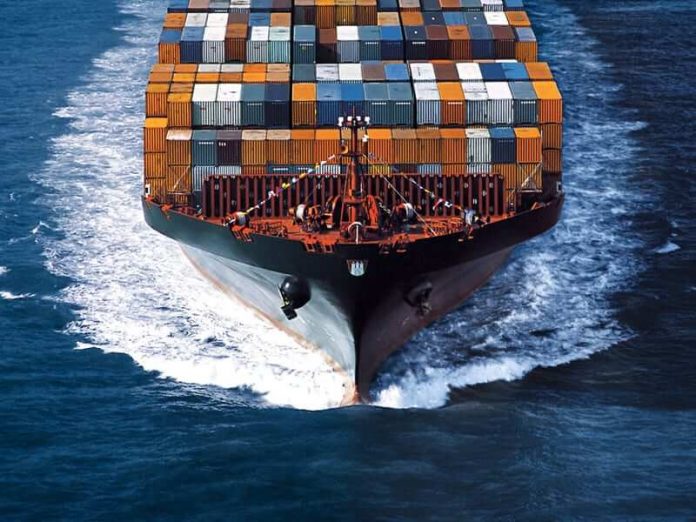This article is written by Upasana Dash, currently pursuing B.A LLB(H) from Madhusudan Law College, Odisha. This is an exhaustive article which deals with several features and aspects of the Major Port Authorities Bill, 2020.
Table of Contents
Introduction
India is strategically located in accordance with the world’s shipping routes. We have a coastline approximately measuring 7500km, and around 4500km of potentially navigable waterways and maritime transport handles around 70% of India’s trading in value terms. India has two types of ports out of which 12 are major ones and handle 55% of cargo traffic and major ports together have handled around 699 million tons of cargo during 2018 and 2019. The non-major ports are largely given to private parties on concession for periods ranging up to 30 years while ownership remains with the concerned provincial government.
The Major Port Authorities Bill, 2020 is aimed at ‘Privatising Public Assets’. The said Bill was introduced in the Lok Sabha by the Ministry of State for shipping, Mansukh Mnadavya on 12th March 2020. The overall view stated by the Water Transport Workers Federation of India is that, ‘the Major Port Authorities Bill, 2020 will help to improvise monopoly appropriate to the wealth lying with major ports in India. The Bill sought to provide autonomy to India’s 12 major ports to cheer competitiveness. This Bill aspires to replace the Major Port Act, 1963. The Major Port Authorities Bill, 2020 was the last Bill approved by Lok Sabha before the lower house adjourned sine die.
The Bill is looking forward to restructure the country’s major public port bodies. The proposal for the Bill was put forward in Parliament in 2016, but the member of Parliament went for a review from the Parliamentary Standing Committee (PSC) prior to the enforcement. The Bill will pertain to 12 major ports of India; Chennai, Cochin, Jawaharlal Nehru Port (JNPT), Kandla (Deendayal), Kolkata (Syam Prasad Mukherjee), Mumbai, New Mangalore, Mormugao, Pradip, Tuticorin (VO Chidambaram), Visakhapatnam, and Kamarajar (Ennore). Certain questions of facts are coming to our mind, is it against the interest of port workers, and a threat to national safety and security? Will the Major Port Authorities Bill contribute to a greater economy?
Aims and objectives
- Decentralising decision-making and full professionalism in the governance of major ports.
- Convey faster and transparent decision-making exploiting the team members and better project discharge capability.
- Reconstruct the governance model in central ports to the land-lord model with the alignment of the successful global practice.
What is a Major Port
- The definition of ‘Major Port’ is nowhere mentioned in the Constitution. Major ports and minor ports are distinguished in terms of their capacity. In general, any port with larger facilities and equipment capable of discharging over 10 lakh metric tons of cargo per month will be considered as a major port.
- Major ports are under the Seventh Schedule of the Union list that’s why Central Government Acts govern the Major ports. While the minor ports are under the Concurrent List. All the minor ports are governed by both Central and State governments.
- Major ports are under the management and control of India (Shipping Ministry). Major ports are mentioned in Section 3(8) of the Indian Port Act, 1908 to mean any which the Central Government may by Official Gazette notification declare, or may under any law for the time being in force here declared to be a major port.
Major ports handle over 70% of all cargo traffic. In the past few years non-major ports are also handling a good amount of cargo traffic. Except for Port Blair, all the 12 major ports come under the Bill. In 2020, the Union Government approved the setting up of the country’s 13th major port at Wadhwan in Maharashtra at a total cost of rupees 65,544.54 crores.
|
Major ports |
Minor ports |
|
|
Background of the Bill
To regulate major ports in India, in the year 1963 Major Pobrt Trust Act came into effect to ensure the easy performance of the major ports. For development, modernisation, and to provide sufficient autonomy to the ports, governance of the port needs to be changed or modified. An amendment bill was introduced in the Lok Saha to change the port trust act in 2016, and it was referred to the PSC. The PSC after taking evidence and recommendations put forward its report in July 2017. Based on the report and recommendations of PSC, the Ministry of shipping introduced the official amendment of the Bill in the Lok Sabha in 2018.
Nonetheless, the Bill lapsed after the dissolution of the previous Lok Sabha. Later on March 12, 2020, with the same recommendation, Major Ports Authorities Bill was passed in the Lok Sabha with an idea that it’s not to privatize major ports but to give them more powers to take decisions in a competitive market and to change the governance of the major ports. The Bill repeals Major Port Trusts Act, 1963, and hit to give freedom to the Major Ports to offer services and management with the effective and new legislation.
The salient features of the Major Port Authorities Bill, 2020
The Bill is brief containing only 76 sections as a substitute of 134 sections, to shrink equivocation and imbrication of the provisions. It composes the Board of Major Port Authority for each major port in place of the board of trustees. The Bill aims to bring down the number of members from the present 17-19 members to 11-14 members.
Board of major port authority shall subsist of a Chairperson, a Deputy Chairperson, one member from State government and Central Government, Ministry of Railways, Ministry of Defence, Customs-Department, not less than two and not exceeding four independent members, and two from employees board. To secure the autonomy of the Board of Major Port Authority, they are entrusted with the following among other responsibilities;
- To use its land, property, assets, and funds as it may think fit for the benefits of the major port.
- To create a master plan independent of any local or State government.
- To enter into and perform contracts necessary for the performance of its functions under the proposed legislation (PPP).
- To make necessary rules and regulations for the smooth operations, developments, and planning of the Major Ports (CSR).
- To fix tariffs for the Major Port facilities.
- The Board may raise loans from banks without prior approval (approval needed only above 50% reserved loan).
- The Bill provides for the composition of the Adjudicating Board.
In a nutshell, the Bill is compact in nature, simplified the composition of the Board of the Port Authority, inclusion of the State representative in the board, redefined the role of tariffs. Authority for the Major Ports, Adjudicating Board to carry out the residual function, enhanced power to the Board of Port Authority, creating a specific master plan, provisions of CSR and development of infrastructure by Port Authority have been introduced and safeguarding the pay and allowances service conditions.
Land-lord model
The said Bill adopts a land-lord model. It will renovate the governance model in Central ports to a land-lord model whereby port infrastructure is leased to private operators. Basically, in the land-lord port model ownership of the port remains with the port authority, infrastructure is leased to the private firms that give and maintain their own infrastructure and install their own equipment to handle cargo and in return land-lord port obtains a share of the profits from the private bodies.
Significance of the Bill
The issue with Indian Ports is that they are lagging so far behind their Asian competitors and the reasons are lack of infrastructure, poor connectivity, under investments, competition from the private sector. All these issues are going to be addressed by the new Bill that will bring world-class infrastructure. The Bill can make India’s major ports compete with major stakeholders of ports and it will attract private investments and also will be a dispersed pledge and suffuse respectability in the regime of major ports.
This will upgrade major ports to perform with greater coherence owing to sovereignty, decision making, and by modernising the institutional infrastructure framework of major projects. A compact board with professional independent members will strengthen decision making, strategic planning, and it will also bring transparency as it is imported to help impart faster and transparent decision making benefitting the stakeholders and better projects execution capability.
Impacts and drawbacks
Contribution to greater autonomy
The Bill is preferred to allow operational and financial autonomy to government locations that have been inactive owing to years of underinvestment and bureaucratic dominance that have steered to loss of market share to minor contenders who have led over them with the esteem and infrastructure trump card.
Sanjam Gupta, Director Sitara Shipping had proposed her view on the impact of the industry, ‘The logistic cost in India is very high estimated at 13-14% of gross domestic product (GDP), very high compared with more efficient global systems. Currently, the vessel and container-related charges at Indian ports are much higher than foreign ports. This adds to the cost of logistics of the country. Add to that longer turnaround time and low output per ship berth and lack of adoption of ultra-modern technologies. The Bill seeks to provide a greater economy to major projects.’
Battling high cost
The government has been ruthlessly chasing its objective of bringing down the strategic cost to offer the potency needed to authorize India to stand at par with other countries. In the US and Europe, logistics accounts for 9-10% of the GDP while in Japan, it stood at about 11%. Cutting down the logistic cost is the need of the hour for India’s Logistics and Supply Chain Fraternity and the Shipping and Maritime Industry has a major role to play in it. India plays an honoured role in global maritime trade due to its logistics and accounts for over 8% of global trade. Maritime trade comes up with over 95% of trade by volume and over 70% by value in India. The Union Ministry of Shipping Mansukh Mandaviya had allocated that the Centre was in the last stage of turning out the National Logistic Policy that would cut down the logistic cost to 9% of the GDP. While the policy is still in the process of being executed, Indian ports are striving to participate with lower-cost in other countries.
According to the data by Container Shipping Lines Association (CSLA), the total port call price at the Nhava Sheva terminal at JNPT, Mumbai stood at 64,592 dollars. This is incredibly higher when taken in comparison to Singapore (17,235 dollars), and Malaysia (12,043 dollars). High costs at major ports such as JNPT lead to knock-on effects at non-major ports that use these costs as a yardstick for their own tariffs, thus resulting in higher tariffs. This adds to the overall cost of logistics of the country.
Putting back the old with new
The Tariff Authority of Major Ports (TAMP) controls terminals at major ports. The new Bill strives to do away with TAMP in tariff setting and restore it with a market-oriented pricing environment to uplift greater competitiveness and grant equal scopes to minor port traders. ‘The Board Port Authority has consigned the power to fix the rate for other port facilities and resources, including land,’ the amended provision declared.
‘An Adjudicatory Board has been put forward to be designed to carry out the surplus duties of the former TAMP for major ports, to look into controversies between ports and PPP (private-public-partnership) concenssanries to analyze stressed PPP projects and suggest ways to bring back such projects, and to look into complaints concerning services supplied by the ports or private entrepreneurs operating within the ports would be composed.’
Fixing rates
Presently, the Tariff Authority for Major Ports, settled under the 1963 Act, sets the scale of rates for assets and services obtainable at ports. Under the Major Port Authorities Bill, 2020, every port will now be governed by the port authority which will have the authority to set credential tariffs for several port services. They may regulate rates for; services that will be discharged at ports, the approach to and usages of the port assets, and different classes of stocks and crafts, amidst others.
Conclusion
It is a welcome budge by the Government of India towards maximum utilisation of the Port Assets in India along with imparting mechanism for regulation, operation, and planning for Major Ports in India and to lay the regulating, authority, and superintendence of such ports upon the Board of Major Port Authorities and for matters associated corresponding or subordinate to that. It is also a step close to Decentralize decision making and marinating professionalism in the governance of major ports by communicating faster and transparent decision making thereby profiting the stakeholders and better project implementation competence.
References
LawSikho has created a telegram group for exchanging legal knowledge, referrals and various opportunities. You can click on this link and join:











